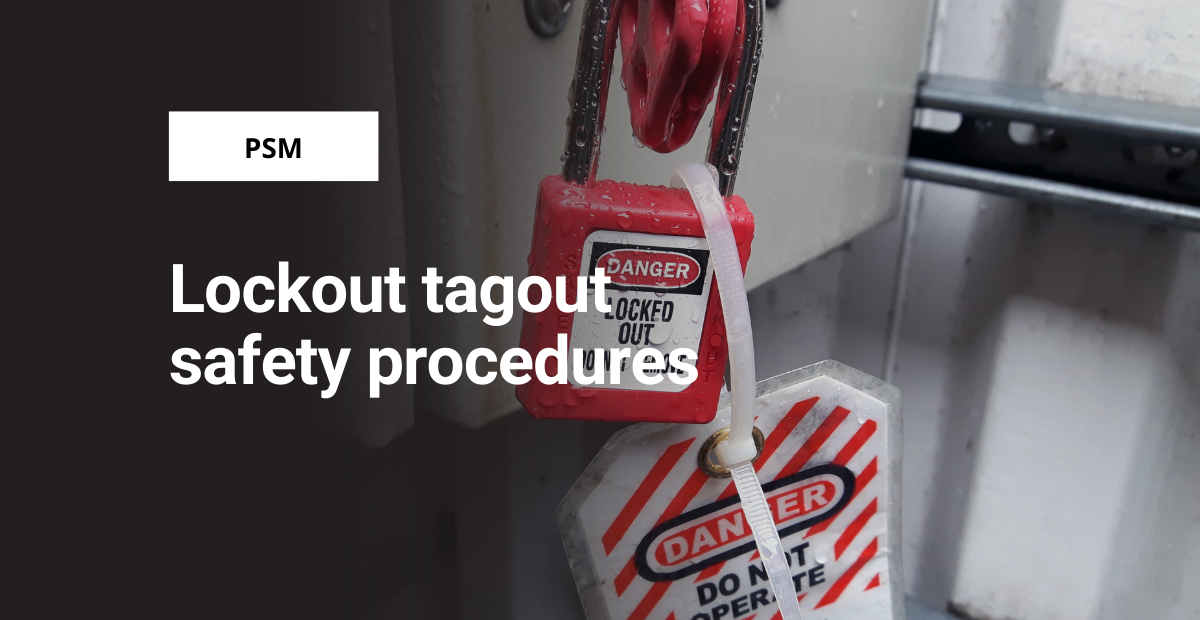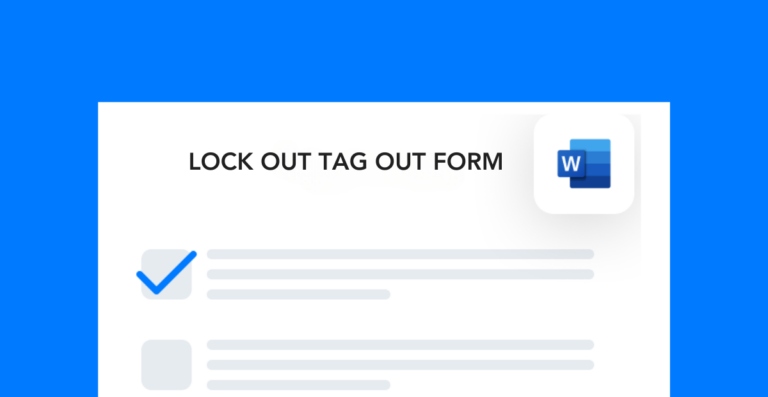Controlling and containing hazardous energy is a critical part of workplace safety. The lockout tagout (LOTO) procedure is designed specifically for this purpose. It shields employees from potentially dangerous energy sources that they may encounter at work.
According to OSHA, lockout tagout procedures prevent “an estimated 120 fatalities and 50,000 injuries each year.” And while those figures are only estimates, they are significant. Having these procedures in place is just the start of preventing these types of incidents. Your LOTO procedure will only protect workers if you provide sufficient training and consistently enforce consequences for not following it properly.
Free form!
This lock out tag out form template provides the outline you need to create a standard approach.
Defining lockout/tagout
During the lockout/tagout process, there are two primary goals:
- Lockout: Install a device (lock) that prevents hazardous energy from flowing to a piece of machinery or equipment.
- Tagout: Put up a warning (tag) that deters anyone from unexpectedly turning on the energy supply to the device.
The LOTO process is not necessarily complicated, but it is crucial. If power is restored to a dormant machine while unsuspecting workers are nearby, the results can be devastating.
Consider, for example, that you’ve turned off a conveyor belt to perform regular maintenance. Workers are standing at nearby stations while the system is off. Someone accidentally turns the conveyor belt back on, and a worker’s hand is resting in the dormant conveyor belt rollers. The rollers crush the worker’s fingers, and he is sent to the hospital for emergency surgery.
This entire incident could have been prevented with a proper lockout device and tag. But it’s not enough to just train employees on this process. After all, a successful lockout/tagout only happens when employees follow the steps carefully.
OSHA lockout tagout requirements
Because of the severity of hazardous energy sources, OSHA has certain requirements for how businesses handle them. Under the Control of Hazardous Energy (Lockout/Tagout) regulation (29 CFR 1910.147), employers must have a system for controlling these hazards.
This standard covers the following types of hazardous energy:
- Electrical
- Pneumatic
- Thermal
- Hydraulic
- Chemical
- Mechanical
There also may be other types of qualified energy that fit outside of these broad categories. Because these are broad forms of energy, you should consider LOTO procedures for any type of energy that poses a threat to worker safety.
OSHA’s Control of Hazardous Energy standard requires three main lockout tagout inputs:
- Comprehensive LOTO training
- Written LOTO safety procedures
- Regular LOTO inspections/audits
Whether you’re starting a new LOTO program or auditing an existing one, evaluate these inputs.
Are your training materials detailed and comprehensive? How will you handle ongoing LOTO education? And do you have a way to audit employees to make sure the process is being followed?
These three inputs are essential for successfully enforcing the lockout/tagout procedure at your site.
Enforcing LOTO for injury prevention
A lockout tagout procedure will only prevent injuries if properly enforced. To make sure that employees are following the system, you will need to:
- Track LOTO training and permissions
- Audit whether employees are following the procedure
- Investigate potential violations
- Enforce penalties for violations
These steps should be part of the safety team’s standard work. And there are many digital solutions for tracking on these tasks.
An EHS learning management system (LMS) allows you to administer and track any safety training that you might have. This would include any mandatory lockout/tagout training modules.
Penalties for not following the lockout/tagout procedure should reflect the severity of the associated hazards. At minimum, employees who fail at this process should have to re-do LOTO training before they can perform it again. You may even consider revoking their permissions altogether.
Your lockout/tagout training should also extend to contractors who work with hazardous energy sources. And you should think about referencing this process in your standard safety training. If employees will be working in an area with several hazardous energy sources, they should be aware of the LOTO process regardless of whether they perform it. Make sure all workers know they must have lockout/tagout training in order to access the energy switches and systems.
Although relatively simple, the lockout tagout process is a very effective incident prevention solution. Audit your facility for areas where you need this procedure. You never know when it will save a life.
To learn more about lockout/tagout requirements, visit OSHA’s hazardous energy overview. For more information about EHS learning management software solutions, schedule a demo of Frontline LMS and see how it can help you streamline your processes.




